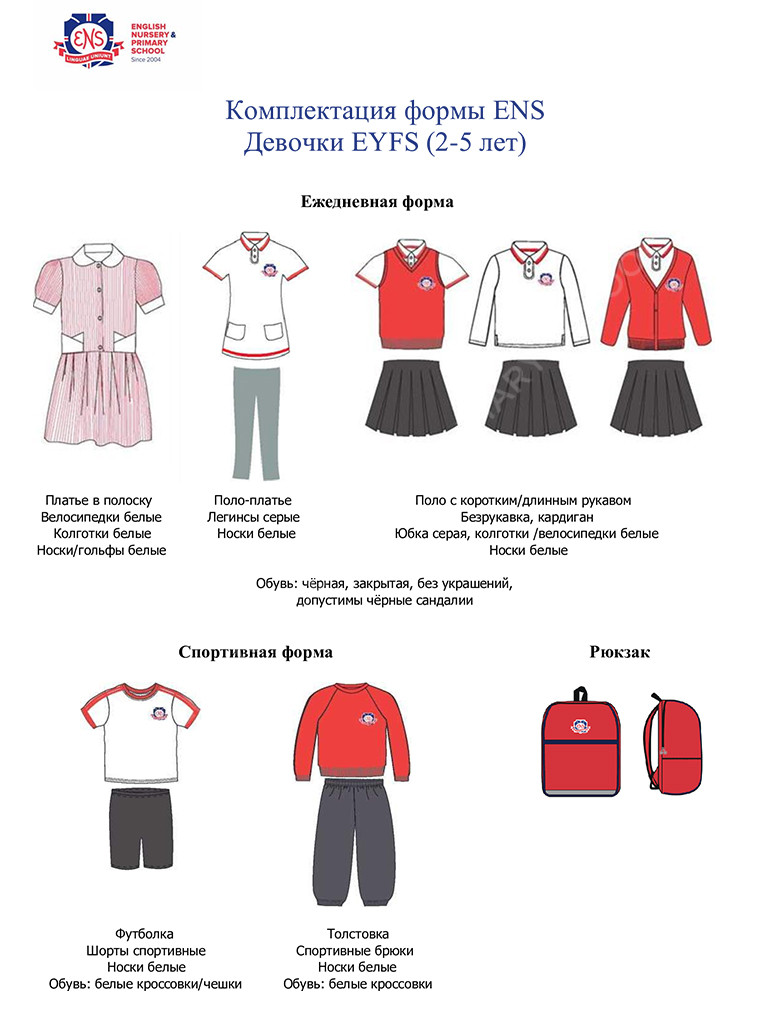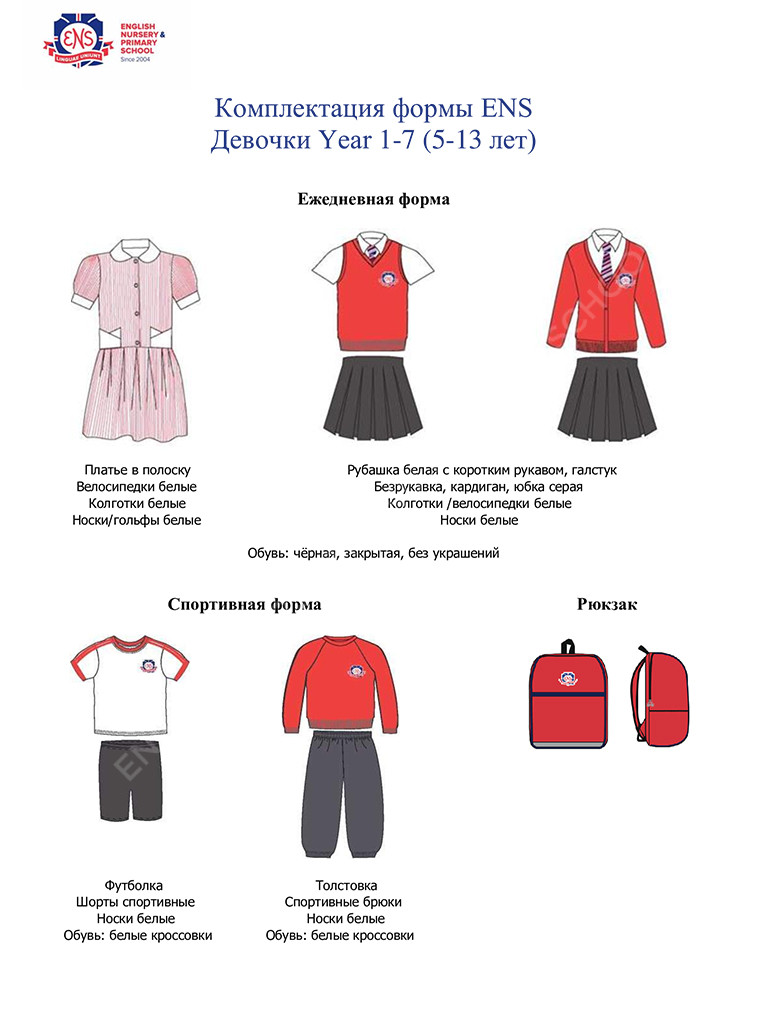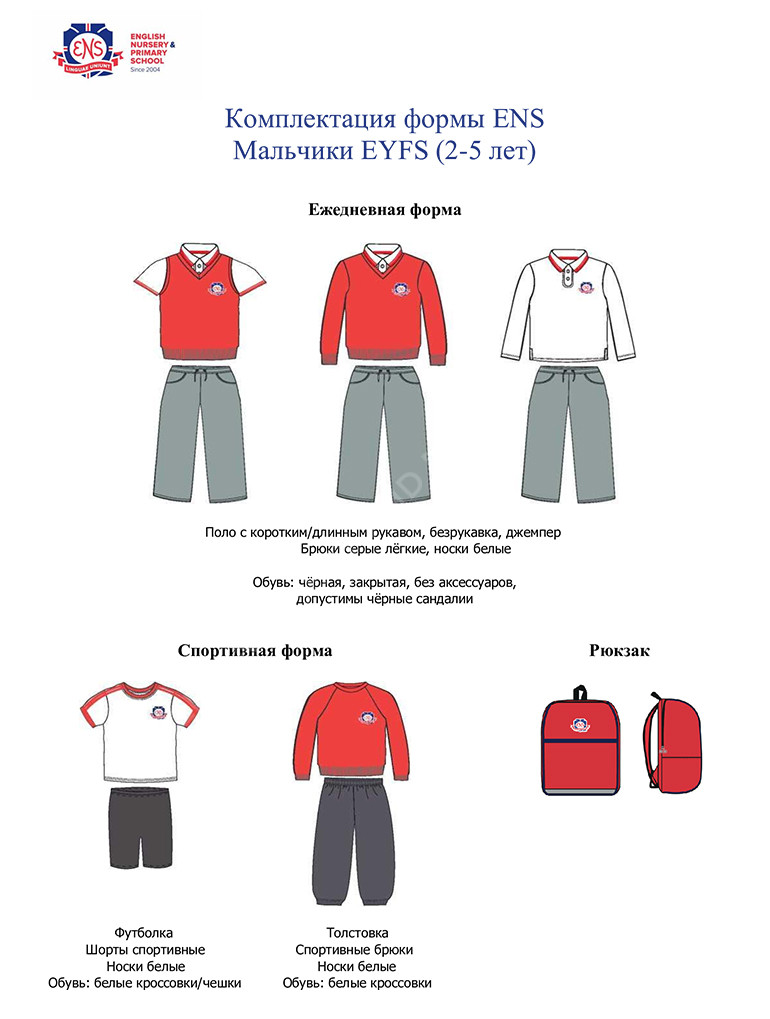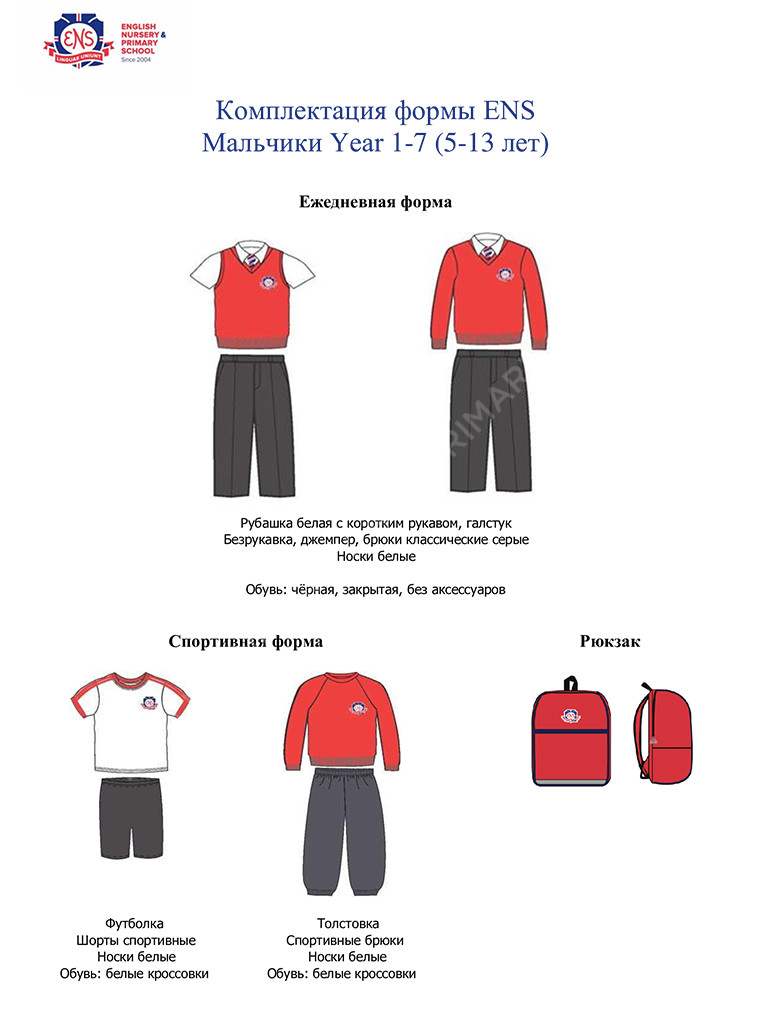Why we wear a uniform
The school uniform is the face of the school - a face that expresses our self-worth. This external attribute of the school’s appearance is no less important than the rest: the motto, the architecture or the interior and design of the building and classrooms. School uniform is a recognisable businesslike style standing for neatness, tidiness and elegance. The uniform is part of the rules common to all, the internal charter of the institution. A uniform with the school emblem stylistically unites the entire educational environment and the pupils and teachers into a single whole.
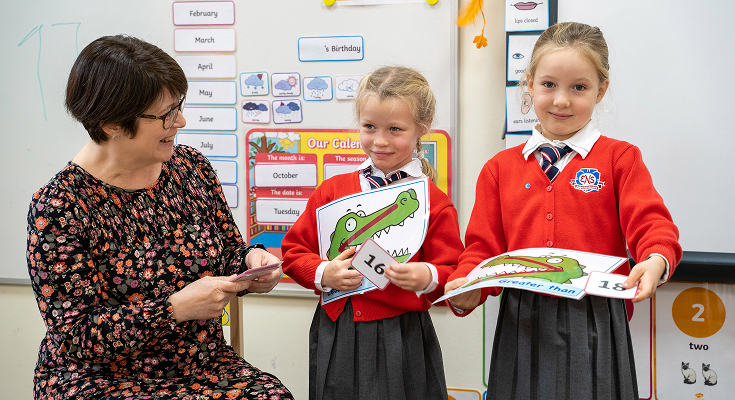
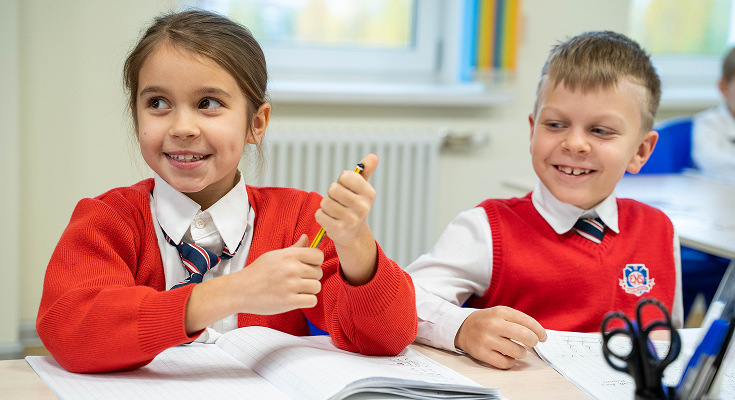
School uniform
A united standard in clothing is one of the most important external distinguishing features of high standard educational institutions both here, in Russia, and abroad. Bearing in mind that the ENS relies heavily on English educational traditions designed to educate little ladies and gentlemen, the importance of a uniform style of dress becomes obvious.
Our appearance determines the inward mood more than we think. All clothing should be appropriate for a particular place and time. School is a place where nothing should distract children from learning. And in this sense the school uniform is extremely functional: it unites and introduces organisation and discipline into the learning process. Identically dressed pupils will not have any reason to organise unspoken «fashion competitions» or discuss the latest styles.
School uniform is a very important element of the school’s communication, promoting cooperation within the school fraternity, a sign of the unity and equality of students in one community. It contributes to the development of a sense of solidarity and pride in the institution, distinguishing members of their alma mater from their thousands of other contemporaries.



